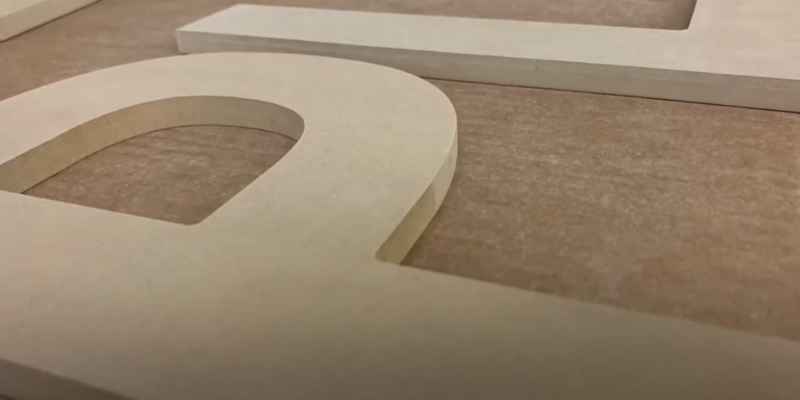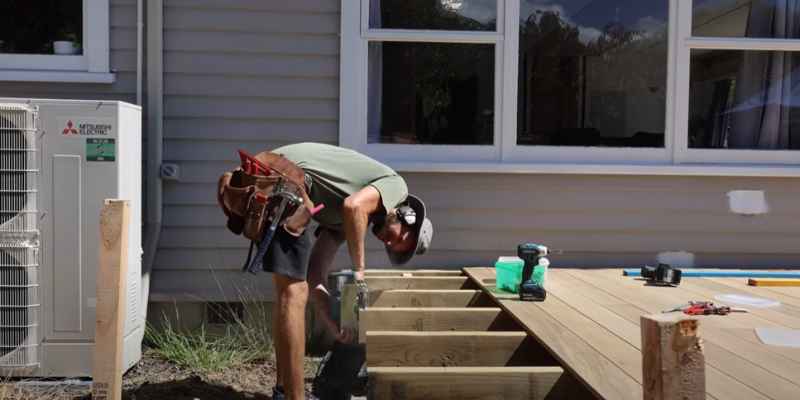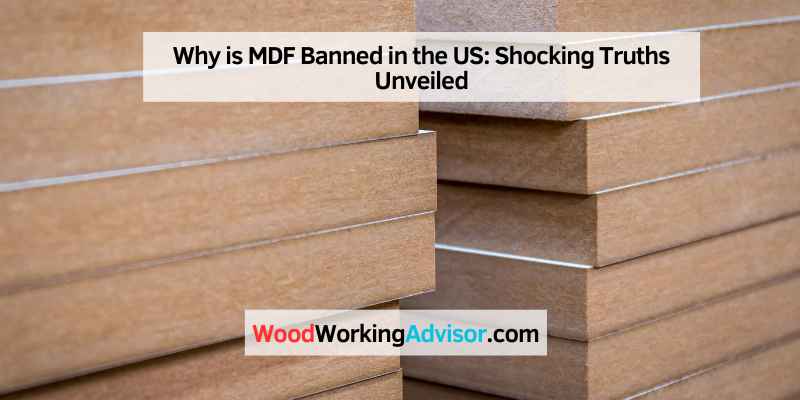MDF is not banned in the US. Concerns about formaldehyde emissions have led to strict regulations.
MDF, or Medium-Density Fiberboard, is a popular material in furniture and construction. It’s known for its affordability and versatility. Despite its benefits, MDF has been scrutinized for its formaldehyde content. Formaldehyde is a chemical used in the adhesive that binds the wood fibers.
Exposure to high levels of formaldehyde can pose health risks, including respiratory issues and cancer. The US has implemented stringent regulations to limit formaldehyde emissions from MDF products. Manufacturers must comply with these standards to ensure safety. This regulatory approach protects consumers while allowing the continued use of MDF.
The Ban On Mdf In The Us
MDF contains formaldehyde. Formaldehyde is a toxic chemical. This chemical can cause health problems. Because of this, the US has strict rules on MDF. The rules aim to protect people. These rules cover how MDF is made. They also cover where it can be used.
Federal regulations limit the amount of formaldehyde in MDF. The EPA and OSHA set these limits. These agencies ensure safety. They monitor the levels of formaldehyde. They also enforce penalties for non-compliance. This keeps people safe from harmful chemicals.

Composition Of Mdf
MDF stands for Medium-Density Fiberboard. It is made from wood fibers. These fibers come from softwood and hardwood. The fibers are mixed with wax and resin. The mixture is then heated and pressed into boards. The resin used is often urea-formaldehyde. This chemical helps bind the fibers together. MDF is known for its smooth surface and strength.
MDF contains formaldehyde, a volatile organic compound (VOC). This chemical can be harmful when inhaled. Formaldehyde can cause irritation to eyes and lungs. Long-term exposure may lead to more serious health issues. MDF is also prone to absorbing moisture. This can cause the boards to swell and lose shape. Therefore, MDF is not suitable for outdoor use. It is often used indoors for furniture and cabinets.
Health Risks Associated With Mdf
MDF releases formaldehyde gas. This gas can cause health problems. Small amounts can irritate eyes and throat. Large amounts can be more dangerous. Formaldehyde is a known carcinogen. It can cause cancer. Some people have allergies to formaldehyde. They may have worse reactions. Always use MDF in well-ventilated areas.
Long-term exposure to MDF dust can be harmful. It can cause lung problems. Workers in factories are most at risk. They breathe in the dust every day. They may develop asthma or other lung diseases. Always wear protective gear when cutting MDF. This reduces the risk of breathing in harmful dust.
Environmental Concerns
The US banned MDF due to concerns about formaldehyde emissions, which can cause health issues and environmental harm. Strict regulations aim to protect both public health and the environment from these toxic substances.
Impact On Air Quality
MDF releases harmful chemicals into the air. These chemicals include formaldehyde. Formaldehyde can cause health issues. Breathing it in can be dangerous. Children and elderly people are more at risk. The air quality gets worse because of this. Factories that make MDF also pollute the air. This affects everyone nearby. Cleaner air is important for all of us.
Waste And Sustainability Issues
MDF is not easy to recycle. It often ends up in landfills. Landfills are bad for the environment. Burning MDF releases toxic fumes. These fumes can harm both people and animals. Making MDF uses a lot of wood. This is not good for forests. We need to save trees and use less wood. Sustainable materials are better for the planet.
Alternatives To Mdf
MDF is banned in the US due to its harmful formaldehyde emissions. Consider using plywood, particleboard, or solid wood as safer alternatives. These options provide durability and fewer health risks.
Eco-friendly Substitutes
Bamboo is a great alternative to MDF. It is strong and grows quickly. Recycled plastic can also be used to make furniture. It helps reduce waste. Cork is another choice. It comes from the bark of trees and is renewable. Wheatboard is made from straw and has no harmful chemicals. Solid wood remains a popular choice for its durability and natural look.
Advancements In Sustainable Materials
Bio-composites are new materials made from natural fibers. They are strong and biodegradable. Hemp is used to create boards that are eco-friendly. Soy-based adhesives replace harmful glues in wood products. Recycled wood is also becoming more common. It saves trees and reduces waste. Mushroom-based materials are another innovation. They grow quickly and are fully compostable.
Industry Response To Mdf Ban
The US banned MDF due to health concerns from formaldehyde emissions. Industry stakeholders are exploring safer alternatives for construction. Environmental regulations also play a significant role in this shift.
Manufacturers’ Adjustments
Manufacturers had to rethink their strategies. They started using other materials. Alternatives like plywood and particleboard gained popularity. Companies invested in new machinery. This helped them switch to different products. Some manufacturers even closed their plants. New safety standards were developed. These aimed to reduce harmful emissions.
Innovations In Wood Products
New wood products emerged in the market. Engineered wood became a strong contender. This includes products like cross-laminated timber. These new products are safer and more eco-friendly. They also meet strict regulations. Recycled wood materials gained traction. These are both sustainable and cost-effective. The industry continues to innovate. New solutions are being developed to replace MDF.
Consumer Perspective
MDF is banned in the US due to health concerns related to formaldehyde emissions. Consumers seek safer alternatives for their homes.
Public Awareness
Public awareness about the dangers of MDF has increased. Many people now know about the harmful chemicals in MDF. This has led to a rise in health concerns. Parents worry about their kids being exposed to these chemicals. News reports have highlighted these dangers. This has made many people more cautious. As a result, MDF’s reputation has suffered. Consumers now prefer safer alternatives. More people are reading product labels carefully.
Shifts In Consumer Preferences
More consumers are choosing eco-friendly products. There is a growing trend for sustainable living. People want furniture made from natural materials. They prefer products that are safe for their families. This shift has impacted the demand for MDF. Stores now stock more eco-friendly options. Consumers are willing to pay more for safer products. This change reflects a larger movement towards health and safety.
The Future Of Mdf And Composite Materials
Research and development in composite materials is crucial. Scientists are creating new, safer materials. They focus on reducing harmful chemicals. Innovative solutions are being tested. These new materials are stronger and more durable. Many companies are investing in this research. The goal is to find eco-friendly alternatives. This will help reduce environmental impact.
Regulatory changes are shaping the industry. New rules are being implemented. These rules aim to protect health and safety. The industry must adapt to these changes. Companies are updating their processes. They are finding ways to comply with regulations. This includes using safer materials. Adapting to new regulations is essential for businesses. It ensures they remain competitive and responsible.

Frequently Asked Questions
Is Mdf Banned In The Usa?
No, MDF is not banned in the USA. It is widely used in furniture and construction industries.
Does Mdf Still Contain Formaldehyde?
Yes, MDF can still contain formaldehyde. Some manufacturers now produce low-formaldehyde or formaldehyde-free MDF options. Always check product specifications.
Why Is Mdf So Toxic?
MDF is toxic due to the formaldehyde resin used in its production. This resin releases harmful fumes. Dust from cutting or sanding MDF can also be hazardous if inhaled. Always work in well-ventilated areas and use protective gear.
Conclusion
MDF is banned in the US due to health and safety concerns. This decision aims to protect consumers from harmful chemicals. Awareness of these risks can guide better choices for home and office materials. Always prioritize safety when selecting construction products.
Stay informed to make healthier, safer decisions.


